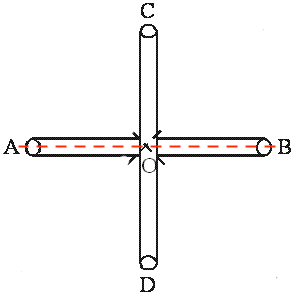So I have two rods that are equal in mass and length. I join them together and form a cross. What is the moment of inertia of this object now in the $x$ axis?
So I attached an image, where the red line shows the axis of rotation. So at that axis, what is the moment of inertia of the cross?

